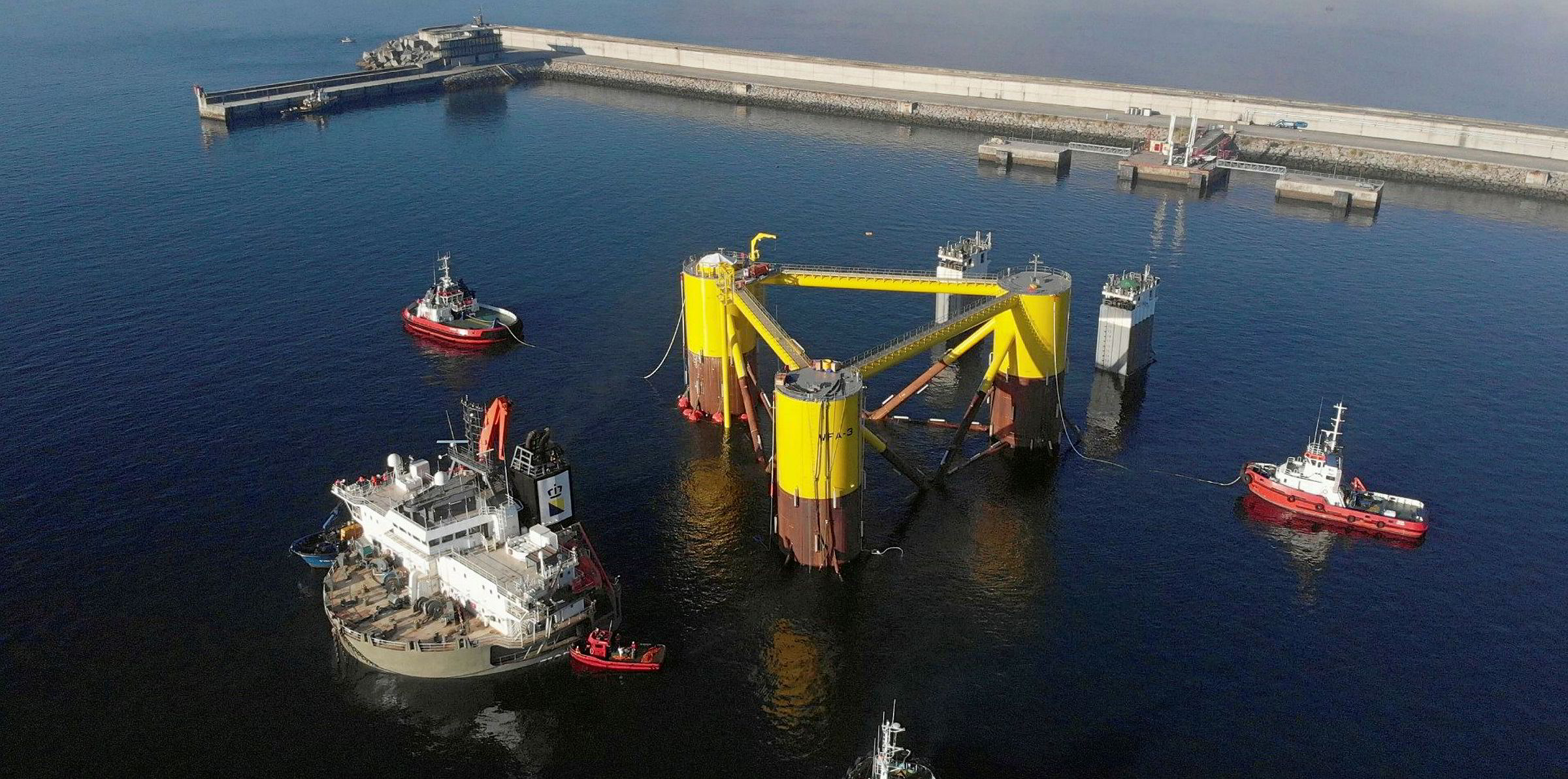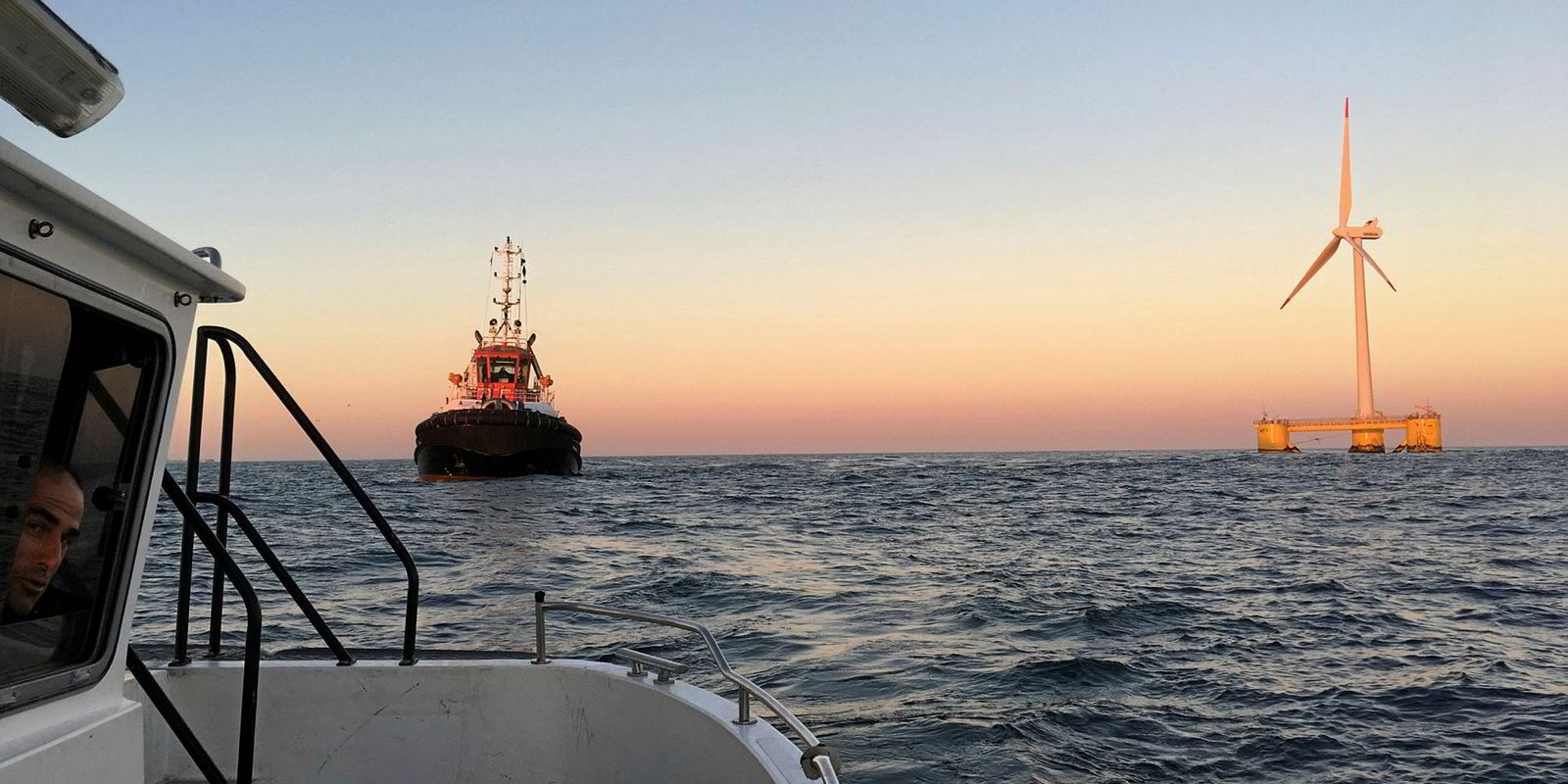Portugal’s keenly awaited 25MW WindFloat Atlantic (WFA) floating wind project has crossed a key milestone with the three-unit array’s first MHI Vestas V164 turbine now in the process of being built and mated to its platform.
Assembly of the 8.3MW machine — the largest yet to be fitted to a floating foundation — in the Spanish port of Ferrol is expected to take several weeks, with float-out to the development site, some 20km off the coast of Viana do Castelo, slated for the “end of summer”.
“Installation of the first WFA turbine on its floating platform ... marks a major milestone for the project and the offshore wind energy sector as this is the largest turbine ever to be installed on a floating platform,” technology developer Principle Power said in a statement.
The WindFloat concept, a steel three-column semisubmersible design featuring so-called heave-entrapment plates, has been in development for over a decade, having been prototyped as a 2MW unit between 2011-2016 at a location near the WFA project site, where water depths are around 100 metres.
As well as WFA, the platform is currently in the frame for flagship projects in all major maritime regions, including being used on one of four pilots off France, and for what could be the first US floating development, in the Pacific Ocean off California.
The original WindFloat prototype was brought back into service this year for Scotland’s Kincardine array, which will use another five of the larger versions of the platform for the full 50MW development.
“This [platform] technology has great advantages that make it more accessible and affordable, including its assembly by standard onshore cranes on dry land — at the port — and the use of common maritime transportation methods, such as tugboats, instead of expensive offshore installation vessels,” said Principle Power.
WFA is being built by Windplus, a consortium made up of EDPR (54.4%), France’s Engie (25%), Spain’s Repsol (19.4%) and Principle Power (1.2%).
The pioneering project has brought together a supply chain that included contractors Navantia/Windar, A Silva Matos, Bourbon and JDR Cables.
Once online, the array will produce enough power to meet the annual energy demands of 60,000 homes.


